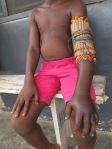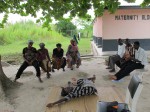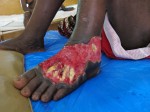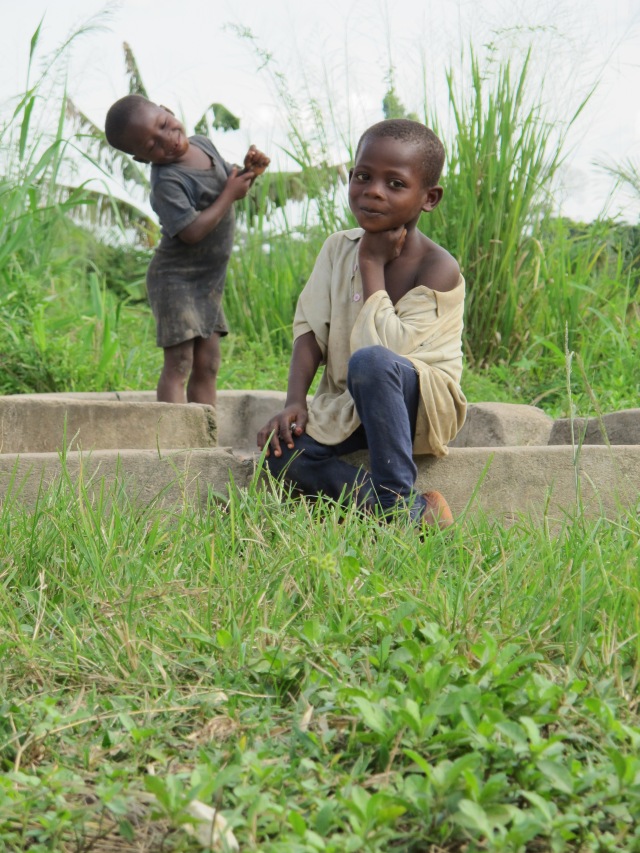It is with deep sadness that I left the shores of Ghana: The vibrancy and happy nature of the people there and the slow and calming pace of life. Throughout my stay in Ghana one song in particular was played repeatedly. It would hover from porridge stalls and sooty tro tro’s, shop windows and mobile phones. The title of the song is “I love my life”. The Ghanaians really do love life. They laugh a lot and in fact the word for smile means laugh so that the Ghanaians see themselves as laughing quite a lot of the time. I took the photo of this wonderful lady during my outreach work in her village. I asked her to smile for the camera.
Coming back to the UK was a shock to the system. The pace of life meant I had little time to stop and catch my breath. Two nights ago at work our department was closed down for security purposes in response to a stabbing in the waiting room. On the same night an eight year old boy was chased by 4 other youth past the resuscitation rooms and when a nurse tried to protect the boy he kicked her and ran off . Riots in London are common but the scale of these has surprised even the most experienced of staff that thought they had seen it all. A shaken registrar turned up to work last night having had his car jumped on by 8 men in black hoods and face masks. His story was tweeted by an eyewitness on the online BBC news live page. The majority of those treated at the department are for riot related injuries are young, under 20. An elderly Jamaican patient stated “It was coming. There is too much tension and nothing for these youth to do. It is a consequence of the government’s cuts: their neglect.” With my heart in my mouth I drove home from work at 2am avoiding police swat teams chasing white vans and youths in hoodies. Arriving home I got out of my car anxiously as 3 young people stood at the end of the street with rollerblades on. They were laughing and joking with each other. It was the summer holidays after all and they had nothing else to do.
Today is another day. On my way here 4 grey police swat team vehicles drove up and down the same round in a haphazard manner. A fellow driver pulled over to the side to let them past looked at me with raised eybrows in a “what the heck are they upto” manner – I could only agree. As I sit here typing this sirens are wailing and I wonder what havoc awaits me out on the streets. London is burning, burning with fiery pent up frustration that is spilling onto the streets. Young people can’t get jobs. The young of the ethnic minority communities of south London have been particularly affected as they are the ones less likely to receive a good education and in turn good jobs. Youth centres are being closed down. This is the recession translated into reality. The library man has just announced that “due to civil unrest this library is closing”. I better round off.
Africa is often viewed by us in the west as an impoverished continent rampant with gang violence and corruption. The events in London show that this is possible anywhere where there is inequality and a polarising social make-up. To solve this problem is undoubtedly complicated. Perhaps however, the answers lie in Africa itself and I can only emphasise what the Ghanaians have taught me. To laugh at things that get you down, to be dedicated to family and friends, to enjoy the free things in life and to love life. Here concludes my year of being “under new skies”. I’ll leave you with a link to the song that will always bring a smile to my face. The Ghanaians did another version of this called “I love my wife” – also worth listening too.














